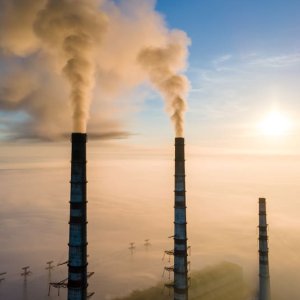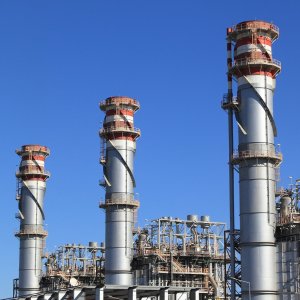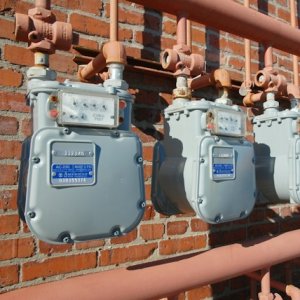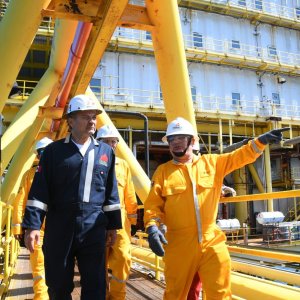North American LNG: Decarbonizing Future Energy Demand

STORY INLINE POST
As the 27th Conference of the Parties (COP27) approaches, we find ourselves in an ever-changing environment. Whereas in 2021 the focus was on transitioning to renewables to combat climate change, the Ukraine effect – the ongoing Russia-Ukraine war vis-à-vis an ongoing supply chain crunch and soaring crude oil and gas prices against a European energy crisis – is sure to exacerbate debates on how to address the energy trilemma. To find a balance between energy security, societal impacts and climate is not a zero-sum game. And with energy consumption expected to double by 2040, fossil fuels will still make up about 60 percent of world energy consumption. There is no single energy technology that will solve the trilemma. However, LNG has a role to play for the long term if it is decarbonized. There are many challenges to achieving this but significant opportunity.
The LNG industry is undergoing significant change as countries across the globe adopt net-zero targets and regulate carbon emissions, while at the same time providing for both the affordability, reliability, and security of energy resources. Thus, LNG has an enabler role as a transition fuel, especially as projects look to encompass carbon capture and storage (CCS) and other carbon mitigation technologies moving forward.
The US ascended to the position of the world’s largest LNG exporter during the first half of 2022, as gas prices soared following increased demand from Europe. According to EICAssetMap, the EIC database for operational energy assets, the country has 86.9 mtpa of LNG export capacity currently installed. This number is poised to increase over the coming years as projects are proposed and new terminals come online: EICDataStream, the EIC’s market intelligence database, points to an additional capacity of 138 mtpa considering future and active projects tracked by the database.
EICDataStream tracks US$368 billion of CAPEX activity across 69 LNG projects located in the US, Canada and Mexico. About US$240 billion is earmarked for projects starting operations over the next five years. The US states of Louisiana and Texas as well as the Canadian province of British Columbia are hotspots for LNG project activity, leading in terms of CAPEX and number of projects.
Key players are building or expanding their LNG export capacity in the US Gulf Coast, Canada and Mexico. Venture Global, which started operations at its 10mtpa Calcasieu Pass terminal earlier this year, has another three projects in the pipeline with a combined CAPEX of US$30.5 billion: CP2, Delta and Plaquemines – all located in Louisiana. Driftwood LNG, a Tellurian company, is making progress with its 27.6 mtpa terminal in Calcasieu Parish, Louisiana. The developer has recently announced a limited notice to proceed with Bechtel for construction work, with a final investment decision (FID) expected soon. Meanwhile in British Columbia, LNG Canada – a Shell-led joint-venture – is building a two-train terminal with a total capacity of 14 mtpa.
According to EICDataStream, there have been 118 major contract awards associated with the LNG sector in North America since January 2018. Baker Hugues leads in terms of orders for turbomachinery equipment, with nine contract awards associated with new LNG liquefaction trains. Bechtel is among the most successful contractors for both EPC and FEED awards, with seven major contracts in the US and Canada. Other major contractors in the North American LNG sector include Worley, McDermott and Kiewit, which has concentrated 14 major contract awards – including contracts secured as part of joint ventures – since 2018.
Key LNG projects are expected to be sanctioned in the coming months across North America. Tellurian is expected to announce a final investment decision on the US$24.7 billion Driftwood LNG terminal this year, while Energy Transfer Partners is also understood to be aiming for an FID on its Lake Charles LNG terminal in 2022. Cameron LNG, meanwhile, targets an FID on its project in Louisiana in 2023.
What is clear is that the North American market leads in global LNG export growth; to be sure, according to the EIC, in 2021, the North American market saw a 51 percent increase in LNG export growth. This year, growth will be dominated by the region, which accounts for more than 75 percent of the net increase in global supply.
Against this backdrop of project opportunity, which addresses affordability and security, is the need to decarbonize LNG. Emissions across the value chain of LNG consist primarily of methane, carbon dioxide and nitrous oxide – three greenhouse gases – along the entire value chain and product life cycle. According to the most recent EIC Insight Report: Liquified Natural Gas (LNG), published in June 2022, approximately 25 percent of carbon emissions arise in the upstream and midstream value chain of LNG. From an upstream perspective, liquefaction of LNG accounts for anywhere between six to 10 percent of carbon emissions via venting, flaring of gas, powering operations and the liquefaction process itself. Transportation of liquified gas accounts for between 17 to 23 percent of GHG (greenhouse gas) emissions and regasification for 1 to 3 percent of emissions. The elephant in the room is the end-use of LNG, which is accountable for emissions above 70 percent of the overall value chain.
There are several ways to address emissions of LNG, including, but not limited to, reducing the greenhouse emissions associated with gas, utilizing technologies like CCS, and hydrogen. Operators are already adopting electrification of oil and gas platforms using power from renewables. As the responsibly sourced gas (RSG) market grows, there is growing momentum for the development of CCS solutions associated with LNG export facilities. In this regard, operators can capture emissions from the reservoir or capture post-combustion emissions. According to the EIC, CCS could be responsible for capturing about a third of emissions needed to reach net zero by 2050.
This is the case in the US Gulf Coast, where key LNG players have announced CCS initiatives to reduce CO2 emissions from their existing and future terminals. One is TotalEnergies, which earlier this year announced an agreement with Mitsubishi Corporation, Mitsui & Co and Sempra Infrastructure for the development of the Hackberry Carbon Sequestration (HCS) project linked to the Cameron LNG facility in Louisiana. CO2 captured by the acid gas removal units at the LNG terminal will be dehydrated, compressed, and transported to a saline aquifer located 6.2 miles away. Another example can be found in Texas, where Talos Energy and Freeport LNG – currently making progress with its fourth liquefaction train – have put forward plans for a CCS project associated with the Freeport LNG export facility. Venture Global has similar ambitions for its terminals, with a project to capture and sequester approximately 500,000 tons of CO2 per year from the Calcasieu Pass and Plaquemines LNG facilities.
These projects are clearly paving the way for the LNG sector toward net-zero and the sector provides an abundance of opportunities for the supply chain. By no means is CCS the only option to decarbonize; hydrogen, bio-LNG, ammonia, and other avenues are also coming to the forefront. The reality is that LNG (and natural gas) will enable a secure and affordable future, and with the adoption of energy transition technologies, North American LNG is sure to be the answer in addressing the energy trilemma and transforming the energy industry as we know it.



























